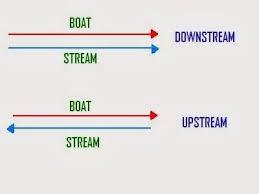Mastering the quantitative aptitude section is essential for candidates aiming to excel in competitive exams, particularly bank exams. Among the various topics covered, boats and stream questions are known for their complexity and ability to test a candidate’s understanding of relative speed and movement in water. By dedicating time to practice these problems, candidates can significantly enhance their quantitative aptitude scores.
The boats and streams questions provide a unique challenge as they require a solid grasp of upstream and downstream movement, still water speed, and current impact. Understanding and practising these questions can help candidates develop a systematic approach to solving them efficiently during exams. Read more to know how to practice these questions.
Applying Formulas for Efficient Problem Solving
One key strategy for excelling in these questions is familiarising yourself with the essential formulas. By understanding and memorising these formulas, candidates can quickly calculate the required values and solve problems more efficiently. Regular practice with these formulas helps internalise them, making recalling and applying them more accessible during the exam.
Practising a Variety of Problem Types
Boats and stream questions can vary significantly in terms of complexity and the scenarios presented. To be well-prepared, candidates should practice various problems, from basic calculations to more intricate issues involving multiple variables. This comprehensive practice helps build versatility and adaptability in solving different questions.
It is essential to utilise practice materials, such as PDFs and online resources, that include diverse problem sets. These resources often provide detailed solutions and explanations, allowing candidates to understand the step-by-step process of solving each problem and learn from any mistakes.
Enhancing Speed and Accuracy
Speed and accuracy are critical in competitive exams. Boat and stream questions, with their intricate calculations, can be time-consuming if not approached methodically. Regular practice helps candidates develop a faster problem-solving pace while maintaining accuracy.
Timed practice sessions can be particularly beneficial. By simulating exam conditions, candidates can learn to manage their time effectively, ensuring they can complete all questions within the allotted time. Additionally, focusing on accuracy during practice reduces the likelihood of errors in the actual exam.
Utilising Shortcuts and Strategies
In addition to understanding the basic concepts and formulas, learning shortcuts and strategies can significantly boost efficiency. For example, recognising patterns in the problems or using estimation techniques can save valuable time. Many practice materials include these tips and tricks, providing candidates with a toolkit for solving boats and stream questions more quickly.
By integrating these strategies into their practice routine, candidates can streamline their approach to solving these problems. This enhances their problem-solving speed and builds confidence, crucial for performing well under exam pressure.
How Boats and Streams Problems PDF are Helpful
Preparing with PDFs offers numerous advantages for candidates. These PDFs provide a structured and comprehensive approach to mastering this topic. They typically start with in-depth explanations of the core concepts, ensuring candidates have a solid foundation before tackling practice problems.
One of the primary benefits of these PDFs is the extensive collection of practice questions, ranging from basic to advanced levels. This variety ensures that candidates are well-prepared for any question they might encounter in the exam. Detailed solutions and explanations are also provided, helping candidates understand the reasoning behind each answer and learn from their mistakes.
Mastering boats and streams problems is vital to boosting quantitative aptitude scores in competitive exams. Regular practice and a systematic approach to solving these problems ensure that candidates are well-prepared to tackle the quantitative section with confidence and competence. Understanding the fundamental concepts and applying efficient problem-solving techniques can significantly improve accuracy and speed during the exam.
